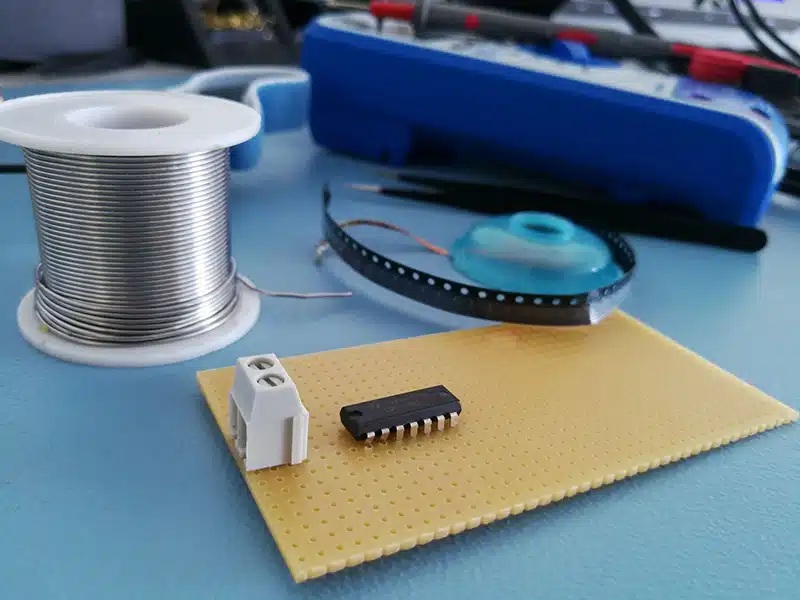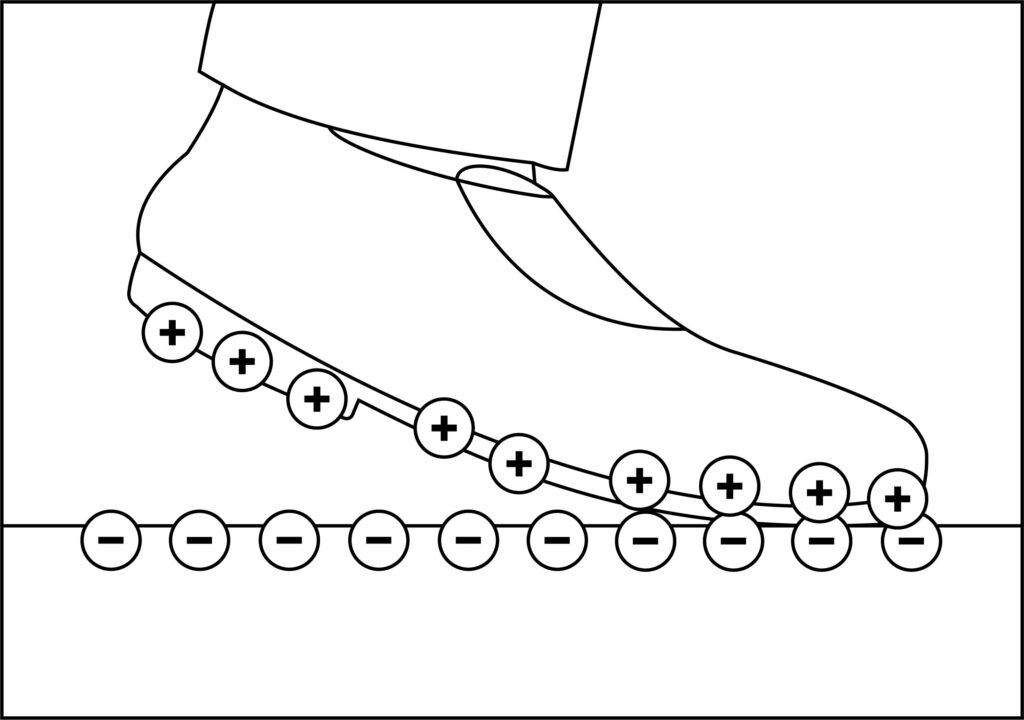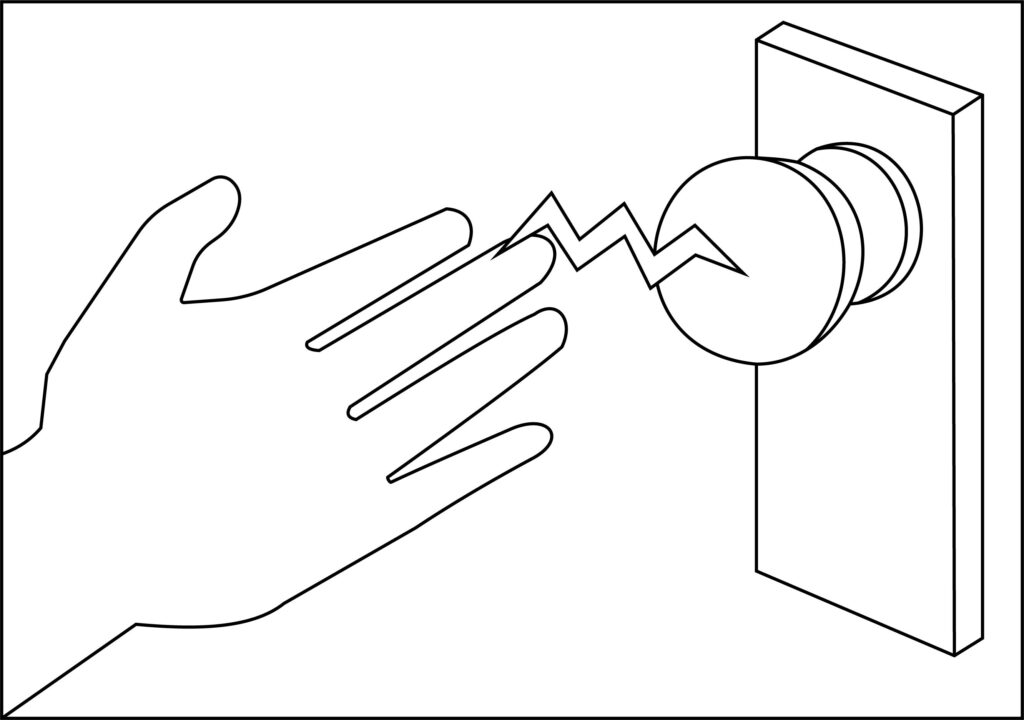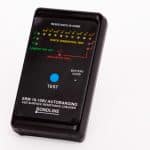Electronic components containing transistors or integrated circuits should be regarded as susceptible to electrostatic discharge (ESD). So what is electrostatic discharge? Why should you keep your workplace protected from ESD? Putting together an ESD Control Plan in place can help your workplace avoid ESD damage. When the charge of an object differs from another, ESD damage can occur. To reduce the possibility of ESD damage, it is often necessary to equalise the charges between a system unit. With charge equalisation, the operator, the device and the surface it is being handled on all have the same charge. Taking basic precautions and handling electronic components the right way can help protect static sensitive electronic components. This article covers how ESD is generated, ESD basics, the common sources of ESD, and how you can keep your workplace protected from electrostatic discharge.
With the widespread use of electronic devices comes the issue of ESD. So what can cause electrostatic discharge? ESD occurs when two electrically charged surfaces or objects come into contact with one another and static electricity is discharged as a result. An example of this is when the human body makes contact with an electronic component.
Everyday occurrences can generate a static charge. Simple actions such as walking across a carpet or even working on a bench can produce charges. The human body can generate thousands of volts. These volts can be transferred to any electronic device that makes contact with the human body. As a result of this contact, static charge can build-up between the device and human body and discharge onto the electronic device. This can cause the device to malfunction or its integrated circuits to be damaged. The average person is not even capable of sensing static charges, not unless the charge reaches around 3,000 volts. However, for static sensitive devices, a charge of as little as 10 volts can cause severe damage to them.
Typically, ESD damage is the result of one of three events. Among them are discharged onto the device, ESD from the device and field-induced discharges. When any of these three events occur, it can inflict damage on an electrostatic discharge sensitive (ESDS) device. If the device gets damaged, it may be due to its inability to withstand the volts. It may also be because it was not able to dissipate the energy from the discharge.
This is one of the events that can cause ESD damage. It occurs if any charged conductors discharge, and the charge is transferred directly to a device. Note that the human body is also considered a charged conductor and can transfer electrostatic charge to a device. As mentioned, everyday occurrences can generate charges. An individual accumulates electrostatic charges whenever they walk across a floor. Once there’s a build-up of static charge, simply touching the device or making contact with it through any part of the body can transfer the charge to the ESDS. Likewise, any other charged conductor can discharge and cause damage to the ESDS.
This is another ESD event that can cause damage to electronics. Also referred to as the charged device model (CDM), this is when the device itself directly transfers its charge to a conductor. The ESDS may accumulate charges through various production or assembly processes. An example of this is when the device is being handled or assembled. It may also collect charges when it comes into contact—and then separates—with work surfaces, machines or packaging materials. A device typically accumulates charges by moving across surfaces. For instance, sliding on a feeder may result in the accumulation of charges. Then, it can discharge once it comes into contact with a conductor or conductive surface.
This event also referred to as field induction or the field induce charged board model (FICBM), is when electrostatic charges are transferred directly or indirectly to the ESDS, causing damage to it. As soon as an object acquires an electrostatic charge, an electrostatic field occurs. Suppose the ESDS is placed within this electrostatic field and subsequently grounded while still being within the area. Then, a CDM event occurs as the device discharges. If the item is grounded after being taken away from the field, another CDM event occurs.

The typical work environment has many different sources of static electricity. It’s important to learn about these different sources so that you can avoid them or put effective countermeasures in place to keep your static sensitive electronic components and devices protected from ESD.
A person can generate thousands of volts just from doing everyday actives such as walking. Even different types of equipment and materials can also generate charges that can cause ESD damage to a static sensitive component. Examples of this include: trolleys, conveyors and automated equipment for handling and assembling products.
The amount of static electricity generated generally varies. This is based on materials, area of contact, friction, and the relative humidity of the environment. At a lower relative humidity, the charge generation will increase as the environment is drier. Common plastics typically create the greatest static charges.
Often at times, charged insulators can generate an ESD event even without coming into contact with the device itself. It does so through an electrostatic field.


To protect your Electrostatic Protected Area (EPA) from ESD, it is important to follow the following ESD basics for your ESD control program per IEC 61340-5-1:
An effective way to prevent damage to static sensitive electronic components and devices is by using ESD control equipment. ESD mats, for instance, help mitigate ESD by eliminating static electricity by dissipating the charge to ground. Grounding straps, on the other hand, provide a reliable path to Earth and prevent static charge accumulation. When choosing to purchase ESD control equipment, you should check to see if the equipment is qualified and compliant according to IEC-61340-5-1 International Standard. Best practices should also be implemented, such as not removing static sensitive electronic components from their containers until they can be safely handled again at ESD-safe workstations. Designating a room where static can be effectively controlled should also be implemented alongside using ESD control equipment. This will allow for an ESD safe working area when handling, assembling and manufacturing your electronics. Establishing an Electrostatic Protected Area is simple – take a look at our guide here.
Selecting the right ESD products can be overwhelming, especially if you’re new to ESD control. To help you out, here is our list of the top 6 products we recommend when starting out in ESD control.
| ESD Mat |  |
Bonding Plug |  |
| ESD Wrist Strap |  |
Resealable Static Shielding Bag |  |
| ESD Cord |  |
Surface Resistivity Meter |  |
Now that you understand what the common sources of ESD damage are, you should look to review your EPA and current ESD control practices with an ESD audit. To check to see whether your ESD Control Programme meets the IEC 61340-5-1 Standard, an ESD control survey can be carried out at your Electrostatic Protected Area.
With an EPA inspection, businesses can check to see whether all the ESD control products and practices are within compliance to the IEC 61340-5-1 International Standard as well as identify any improvements or changes to make.
Creating an ESD-safe workplace entails being mindful of the common sources of ESD damage and using the appropriate ESD control equipment to mitigate static charge. Bondline offers a wide variety of static control products to help you achieve this. Browse our catalogue here.
We’re always happy to help! Please call us today on 01793 511000 or email us at sales@bondline.co.uk for ESD advice and support.
Fields marked with an * are required
On selected products if ordered before 1pm
Dedicated account manager to help your ordering process
Great value on premium quality products
Bondline Electronics Ltd are a leading manufacturer and supplier of static control products within the ESD industry. Products such as Flexible and Rigid Packaging, Bench Matting, Wrist Straps, Heel Grounders and Shoes, ESD Protective Clothing and Gloves, Test and Measurement Equipment along with many storage and handling solutions.
Bondline products are all qualified and compliant according to IEC-61340-5-1 International Standard.
Registered Company Number: 02933918
Office Hours: Mon – Thurs: 9am – 5pm Fri: 9am – 2pm

Bondline Electronics Ltd are a leading manufacturer and supplier of static control products within the ESD industry. Products such as Flexible and Rigid Packaging, Bench Matting, Wrist Straps, Heel Grounders and Shoes, ESD Protective Clothing and Gloves, Test and Measurement Equipment along with many storage and handling solutions.
Some of these cookies are essential, while others help us to improve your experience by providing insights into how the site is being used.
For more information and to read more about our privacy policy, please visit our Privacy Policy
Necessary cookies enable core functionality. The website cannot function properly without these cookies, and can only be disabled by changing your browser preferences.